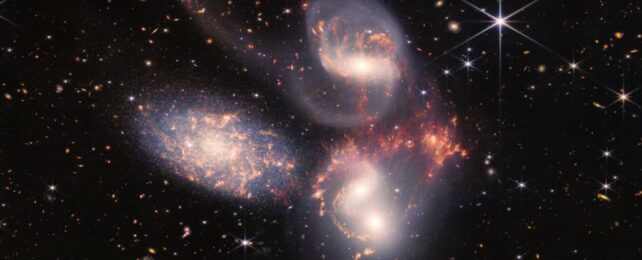In a corner of space 290 million light-years from Earth, we're getting to see something truly epic in action.
There, four galaxies are closely interacting, the region filled with the detritus of past collisions, so vast and energetic that their interaction is lighting up the space between them with an X-ray shock-front.
The group is known as Stephan's Quintet (there's a fifth galaxy, but it's not actually sitting with the cool kids), and new observations reveal the intricacies of the ongoing activity. One of the four galaxies involved is stirring up trouble by smashing through the group like a wrecking ball at 3.2 million kilometers (2 million miles) per hour.
These findings will help scientists understand how giant galaxies interact, collide, and merge to produce even bigger galaxies where gravity draws them together across chasms of space-time.
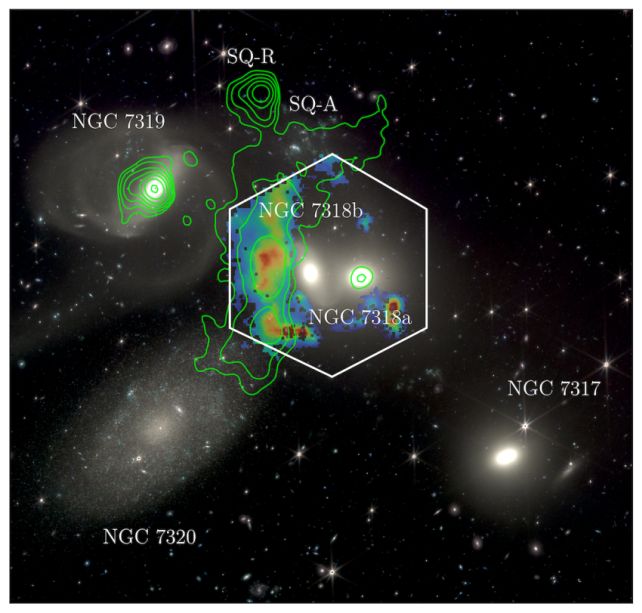
"Since its discovery in 1877, Stephan's Quintet has captivated astronomers, because it represents a galactic crossroad where past collisions between galaxies have left behind a complex field of debris," explains astrophysicist Marina Arnaudova of the University of Hertfordshire in the UK.
"Dynamical activity in this galaxy group has now been reawakened by a galaxy smashing through it at an incredible speed of over 2 million mph (3.2 million km/h), leading to an immensely powerful shock, much like a sonic boom from a jet fighter."
Stephan's Quintet is an interesting group of galaxies. It looks like five galaxies clustered together in the sky, so when they were discovered in the 19th century, that's how they were cataloged. One of the galaxies, however, isn't a true member of the group at all: it's simply along the same line of sight, just 40 million light-years from us, separated from the rest of the quintet by a distance of 250 million light-years.
The remaining four galaxies are close enough together to be entangled gravitationally, engaged in a complex dance that spans billions of years. That dance has produced a cloud of gas – perhaps stripped from the galaxies and left hanging in the intergalactic space between them, shocked and heated by the push-pull of their interaction.
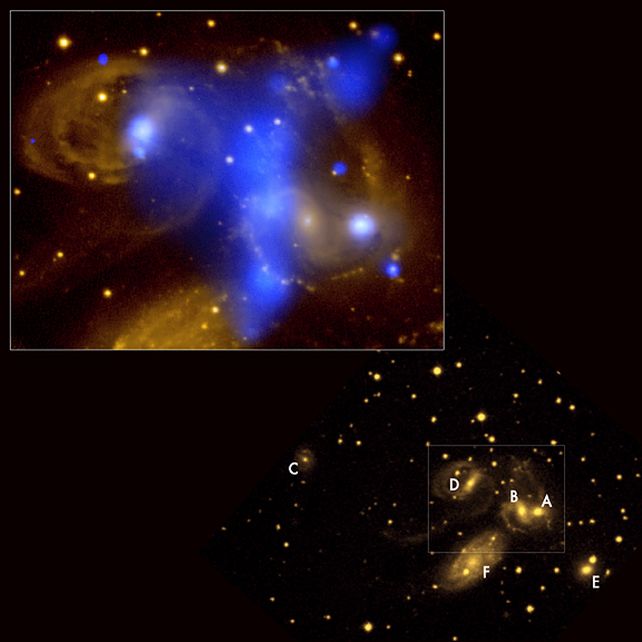
The new observations, taken at first light for the William Herschel Telescope Enhanced Area Velocity Explorer (WEAVE) wide-field spectrograph in Spain, has revealed new details in that shocked gas. They are the first results published for the instrument.
They show the galaxy named NGC 7318b slamming into the gas, creating a shock front larger than the Milky Way galaxy as it hurtles through. And the team's analysis reveals, for the first time, that the gas behind the shock front has a dual nature.
"As the shock moves through pockets of cold gas, it travels at hypersonic speeds – several times the speed of sound in the intergalactic medium of Stephan's Quintet – powerful enough to rip apart electrons from atoms, leaving behind a glowing trail of charged gas, as seen with WEAVE," Arnaudova says.
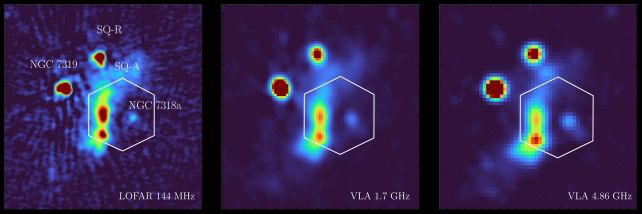
However, when the shock travels through hot gas, it weakens, compressing the gas and glowing in low-frequency emission that is detected by radio telescopes like the LOFAR array.
Together, the results reveal that the collision is creating a cascade of energy that is affecting all gas phases within the cloud. LOFAR observations date the population of energized particles to about 11 million years, which is consistent with the crossing time of NGC 7318b.
Stephan's Quintet is a group that is of intense interest to scientists. Such a complex interaction, so close to Earth, is a rare thing, and it has been studied avidly. Since galaxies such as the Milky Way are thought to grow by colliding with and subsuming other galaxies, every scrap of new information is worth acquiring.
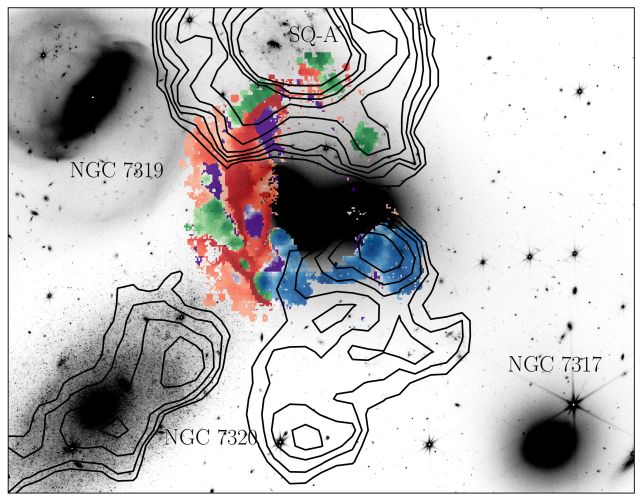
The team's results demonstrate that these new details may be lurking just out of view, waiting for the right instrument to uncover them.
"It's fantastic to see the level of detail uncovered here by WEAVE," says astrophysicist Gavin Dalton of the University of Oxford in the UK.
"As well as the details of the shock and the unfolding collision that we see in Stephan's Quintet, these observations provide a remarkable perspective on what may be happening in the formation and evolution of the barely resolved faint galaxies that we see at the limits of our current capabilities."
The research has been published in the Monthly Notices of the Royal Astronomical Society.
